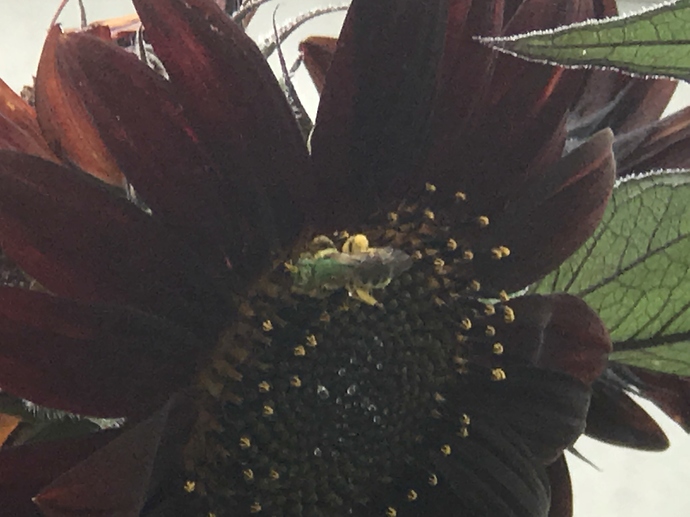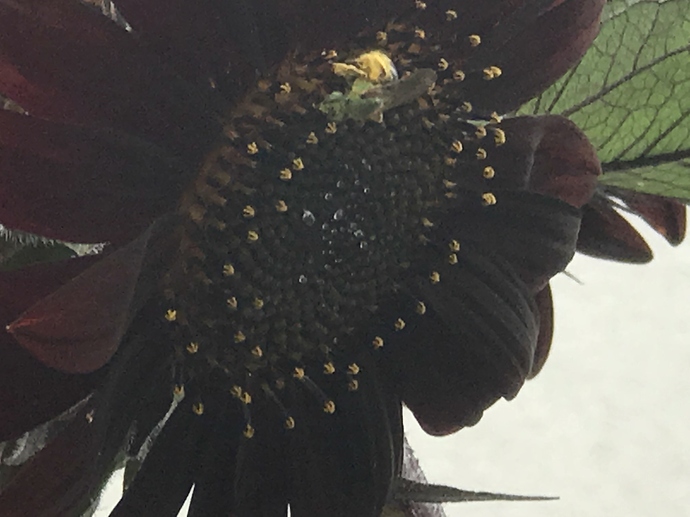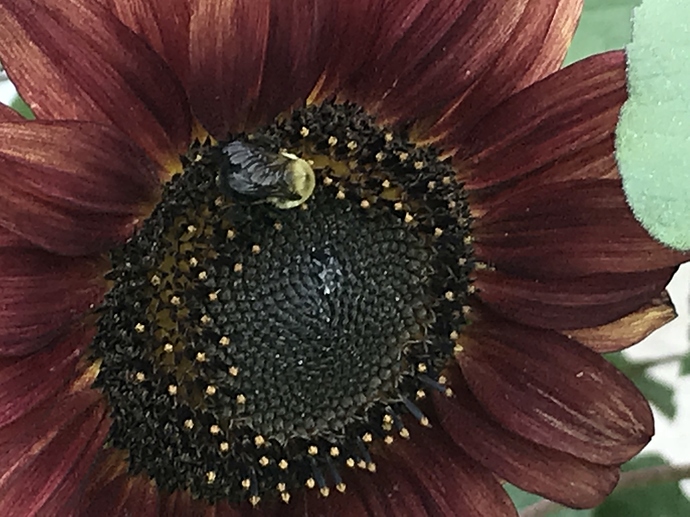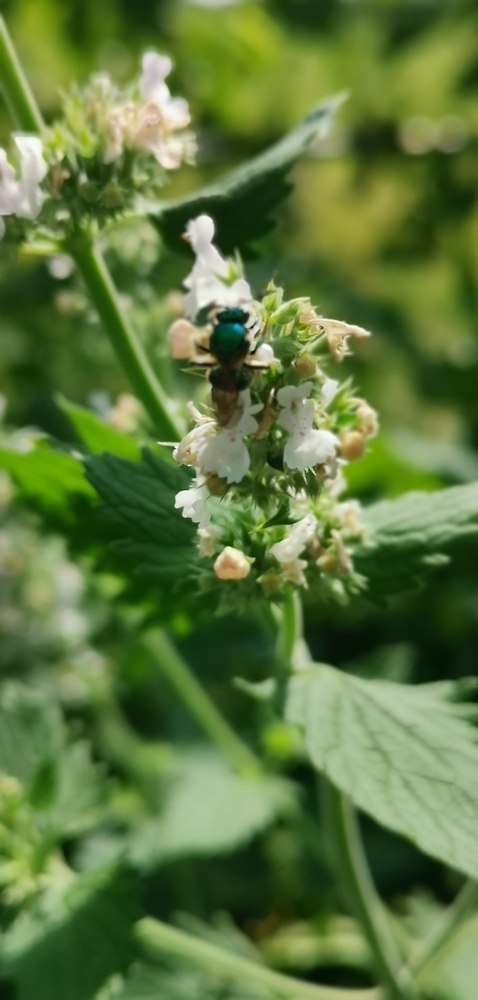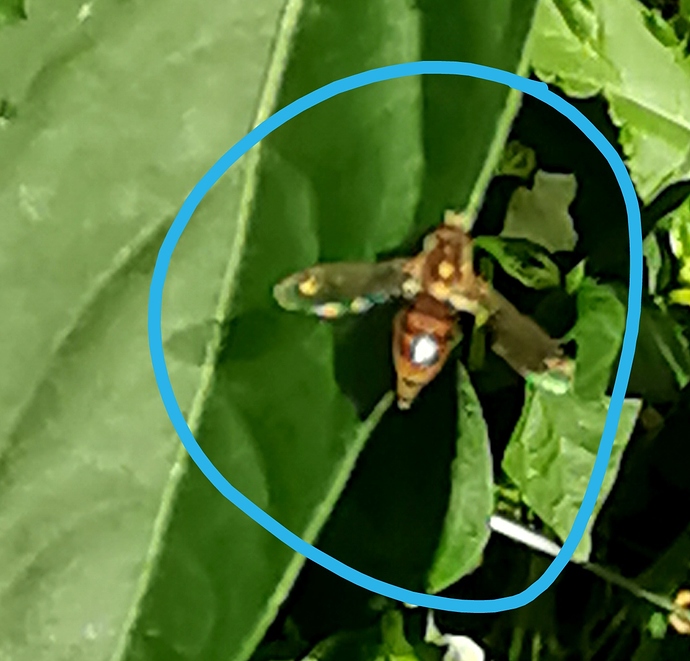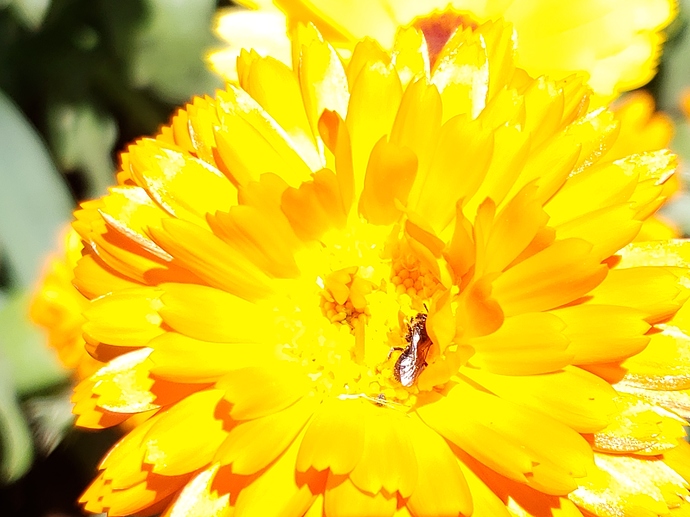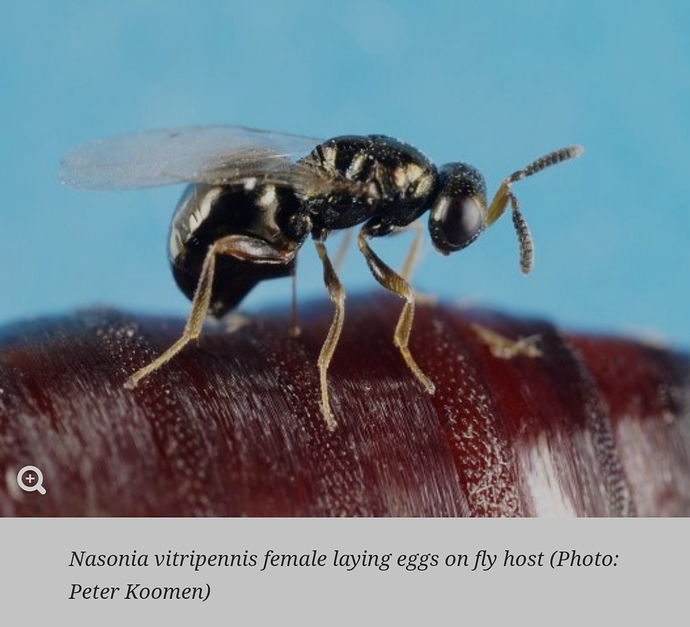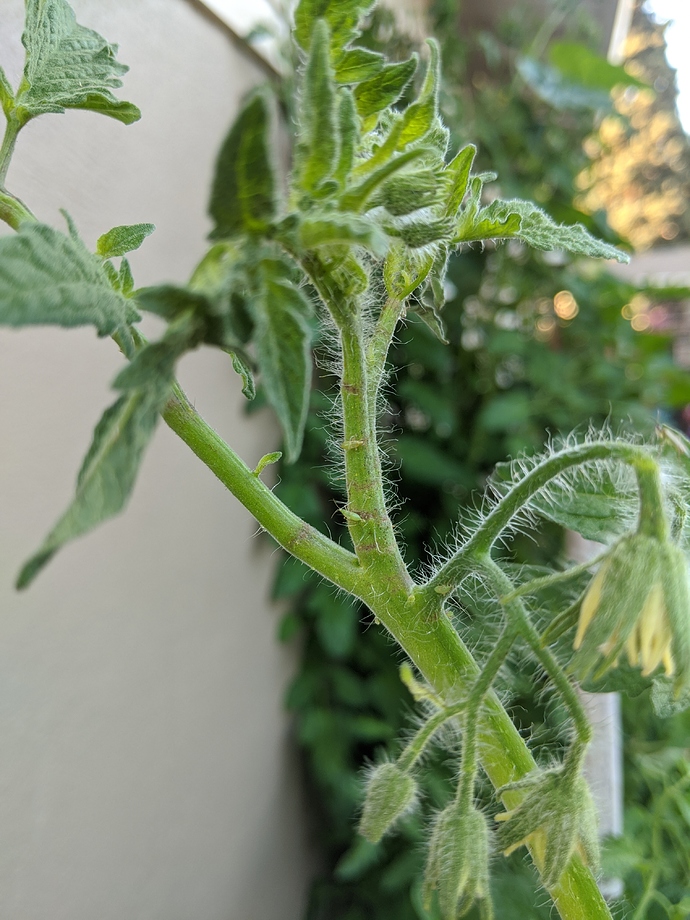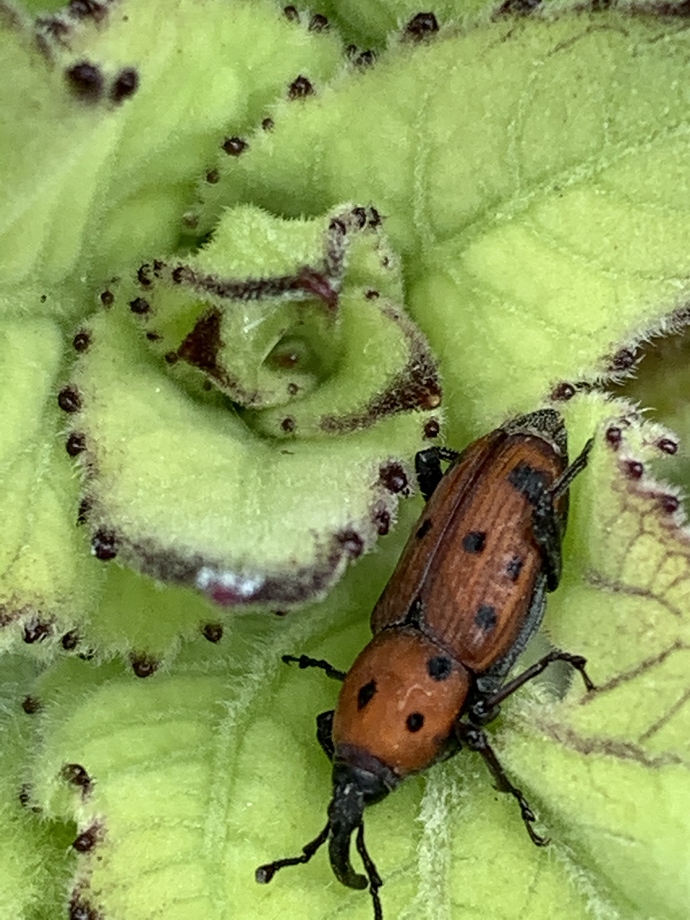IL847: Yes, one of the Tree Crickets.
I wonder what kind of mason bee this is? Very green head that is pollen of course on the legs but odd black oblong stripes on the back. I could not get within 2 - 3 ft of her without making her scare off which is weird cuz you can basically pet bees while they are working on the sunflowers.
Our common bumble bee drone
Its strange how they make eye contact with you, think of all the baby peppers!
Richard: Not Mason bee, but your first two images are of a Sweat bee. They live in individual holes in the ground rather than in hives.
Neat! thank you @LarryGene It was definitely unique and very different as well as scared of me which i am not used to. Very interesting bee i will have to figure out where there hole is sometime i can follow them.
I thought this is blue Mason bee ,but I have second thought, it might be sweat bee too?
Also please tell me they are bees or not, and what kind of bees
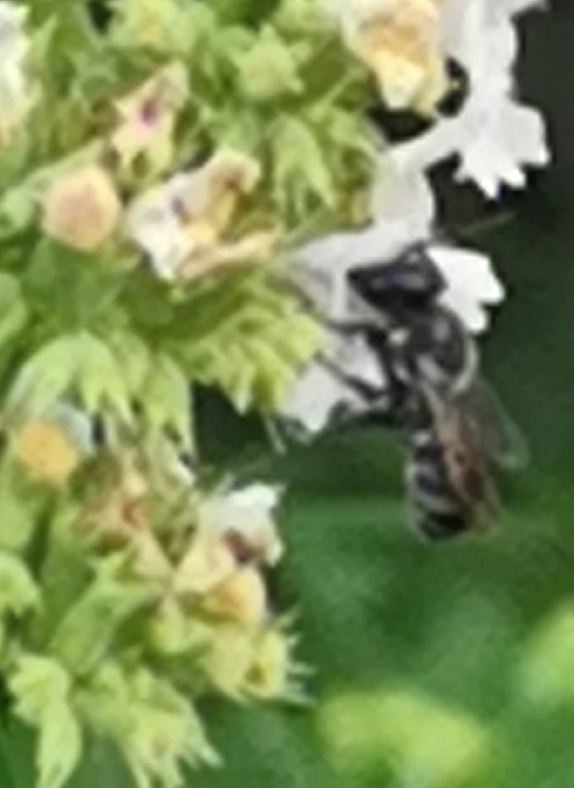
1&2 look too brightly colored to be the Blue Mason Bee.
#3 is a wasp of some kind.
#4 may be a Bee Fly (not a bee, but a fly)
Got it. Thank you Larry.
I have these too. I assumed they are some kind of sweat bee. They are pollinating machines. These daisy-looking flowers really attract them.
The one with the circle looks like it could be a leafcutter bee.

I finally Identified this critter by her handiwork. She seems to love Geneva-969
Yes it seems attracted to the flowers. Is sweat bees good to have or should get rid of?
I am not seeing so many of them out anymore, but they were extremely active during the Spring months. I would keep them to pollinize your fruits.
Also, the circled bee may be a cuckoo bee. I am not good enough to tell the difference.
Sitting out around my fire pit, I started noticing a bunch of small flies going in and out of small (really small) cracks and holes in the mortar. Looking closer, I see they are actually tiny black wasps. They are never still and very difficult to photograph with a cell phone, but I did manage to get a picture:
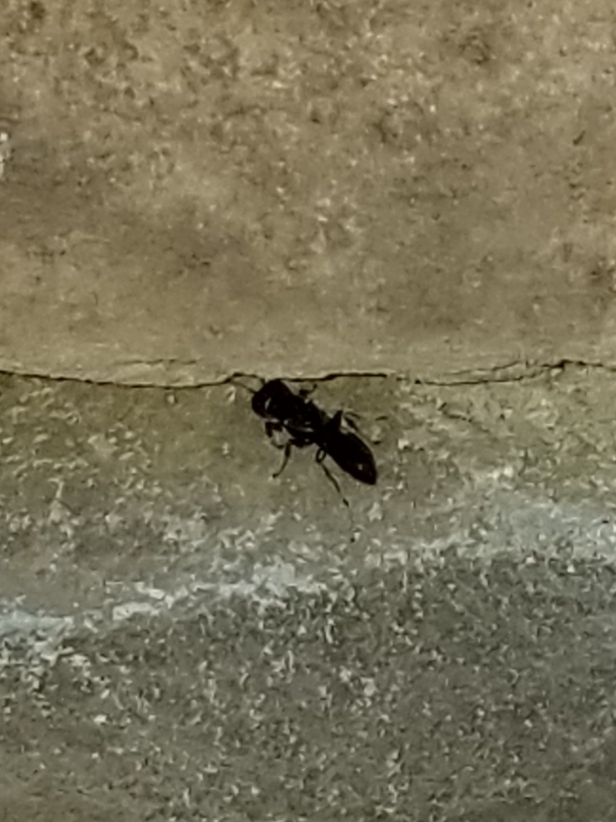
I believe these are parasitic “Nasonia” wasps as shown below:
Looks similar to the bee I see in my garden
looks like aphids. They do have wings
Is this a Rhubarb beetle, Tetraopes Tetrophthalmus? It was on a sunflower growing next to my rhubarb.
The scientific name you gave is for the Red Milkweed Beetle.
Although the insect in the KSprairie image is a beetle, it is also a weevil, unlike the Milkweed Beetle.
…and it does not match Lixus concavus, the Rhubarb Weevil.
Further research shows it may be
Rhodobaenus tredecimpunctatus - Ironweed Curculio
https://bugguide.net/node/view/21822/bgimage
spurious: Unless from a neighbor’s adjacent planting, aphids get to your yard on the wing. Those first few winged adults can create many thousands of immature aphids.
What about the Cocklebur Weevil?The markings are close,but sometimes they have a dark patch at the end of the back area.bb
I tend to find aphids after unusually windy days.
Brady: scroll down to “Other common names”
https://bugguide.net/node/view/21822
Dark markings on many beetle species vary regionally.
